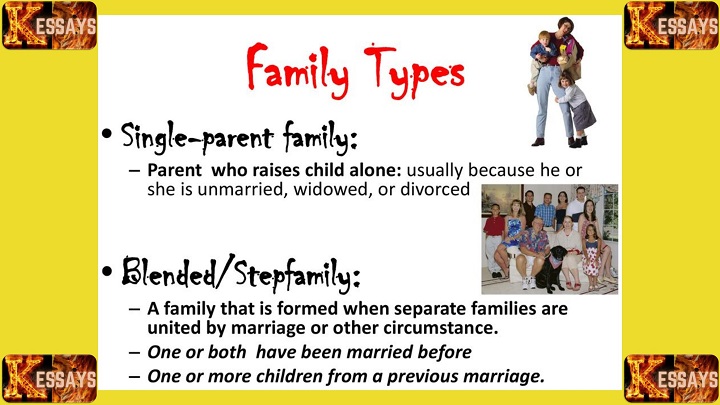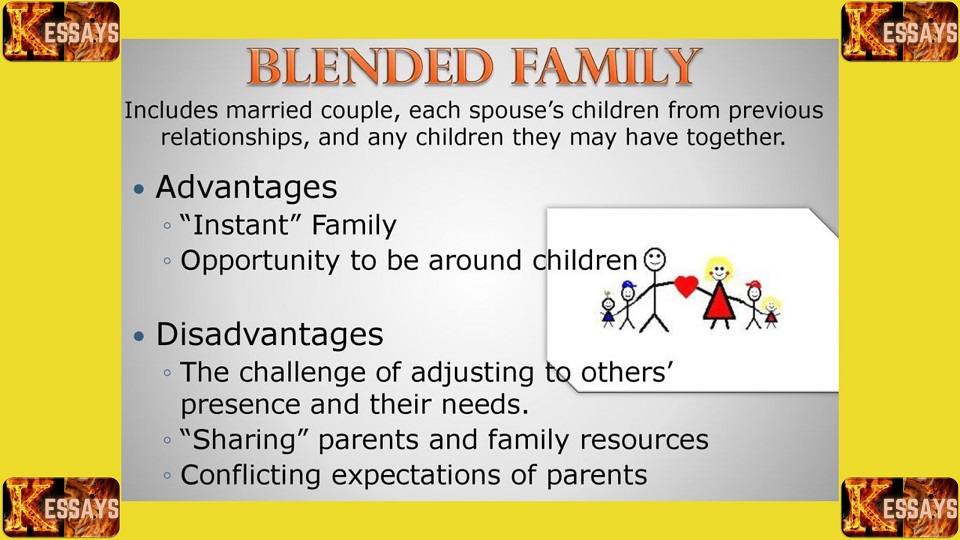Types of Family Structure: Defining the Concept and Significance
The concept of family structure refers to the organization and composition of a family unit, including the relationships, roles, and dynamics among its members. Family structures can vary significantly across cultures, societies, and individual circumstances, reflecting the diverse ways in which families are formed and function. Understanding different types of family structures is crucial as it enables us to appreciate the complexities of family life and the diverse experiences of individuals within these structures.
II. Nuclear Family
A. Definition and Characteristics
The nuclear family is one of the most common types of family structures. It typically consists of a married or cohabiting couple and their dependent children, living together as a self-contained unit. The nuclear family is often viewed as the traditional family model in many societies.
B. Role and Dynamics within the Nuclear Family
In a nuclear family, the parents or caregivers assume the primary responsibility for raising and nurturing the children. They make decisions regarding the family's well-being, provide emotional and financial support, and impart values and socialization. The dynamics within a nuclear family tend to be close-knit, with a strong focus on the parent-child relationship and the shared experiences of the immediate family members.
C. Advantages and Disadvantages of the Nuclear Family Structure
Advantages of the nuclear family structure include a sense of stability, strong parental involvement in child-rearing, and the ability to make independent decisions. Additionally, the nuclear family often provides a conducive environment for individual growth and development.
However, some disadvantages can arise in nuclear families, such as limited support networks, potential isolation, and increased financial responsibilities. Single-parent households can also fall under the nuclear family structure, which may bring additional challenges for the primary caregiver.

III. Extended Family
A. Definition and Characteristics
The
extended family structure expands beyond the nuclear family to include other relatives such as grandparents, aunts, uncles, cousins, and in-laws. In an extended family, multiple generations often live together or in close proximity, sharing resources, responsibilities, and emotional support.
B. Role and Dynamics within the Extended Family
In an extended family, roles and responsibilities are often distributed among multiple family members. Grandparents may play a significant role in child-rearing, providing guidance and support. The extended family also fosters a sense of interconnectedness, mutual aid, and collective decision-making.
C. Advantages and Disadvantages of the Extended Family Structure
The extended family structure offers several advantages, including increased emotional support, shared caregiving responsibilities, and a broader support network during times of need. It also promotes intergenerational relationships and cultural continuity within the family.
However, challenges can arise in extended families, such as conflicts over decision-making, differing parenting styles, and potential strains on resources and space due to the larger family size. Maintaining harmonious relationships and effective communication can be crucial in overcoming these challenges.
IV. Single-Parent Family
A. Definition and Characteristics
A single-parent family consists of one parent who assumes the primary caregiving role for their child or children. This family structure can result from various circumstances, including divorce, separation, death of a spouse, or the choice to parent alone.
B. Role and Dynamics within the Single-Parent Family
In a single-parent family, the parent shoulders the responsibilities of both parenting and providing for the family. They take on multiple roles and often face unique challenges, balancing work, childcare, and household management. Single parents strive to provide emotional support, guidance, and a nurturing environment for their children.
C. Advantages and Disadvantages of the Single-Parent Family Structure
Single-parent families demonstrate resilience and strength, with parents often developing close relationships with their children. Single parents may have greater control over decision-making and parenting styles. Additionally, the extended family, friends, or support networks can play a crucial role in providing assistance and support.
However, single-parent families may face economic challenges, emotional stress, and limited availability of time due to the sole responsibility of parenting. Building strong support systems and accessing community resources can help mitigate these difficulties.
V. Blended Family
A. Definition and Characteristics
A
blended family, also known as a stepfamily, forms when two individuals with children from previous relationships enter into a new marital or cohabiting relationship. The blended family structure brings together biological parents, stepparents, stepchildren, and potentially half-siblings.
B. Role and Dynamics within the Blended Family
In a blended family, establishing new family dynamics can be complex. Biological parents and stepparents navigate their roles as caregivers and authority figures, while children adjust to new family members. Open communication, flexibility, and mutual respect are crucial in fostering positive relationships within the blended family.
C. Advantages and Disadvantages of the Blended Family Structure
Blended families offer opportunities for new relationships to form and for children to experience a broader family network. They can provide emotional support, companionship, and additional parental figures.
However, blending families can also present challenges, including adjustments to new routines, managing conflicts between different family members, and dealing with loyalty conflicts between biological and stepparents. Effective communication, fostering a sense of unity, and seeking professional support when needed can help address these challenges.

VI. Same-Sex Parent Family
A. Definition and Characteristics
Same-sex parent families involve two parents of the same gender who assume the role of primary caregivers for their children. These families may result from adoption, assisted reproductive technologies, surrogacy, or previous heterosexual relationships.
B. Role and Dynamics within the Same-Sex Parent Family
In same-sex parent families, the roles and responsibilities of each parent are negotiated within the context of their relationship and the specific needs of their children. Both parents contribute to caregiving, emotional support, and decision-making, fostering an equitable and inclusive family environment.
C. Advantages and Disadvantages of the Same-Sex Parent Family Structure
Same-sex parent families provide loving and nurturing environments for children, with research indicating that children raised in these families fare similarly to those raised in heterosexual families. Same-sex parents often exhibit resilience, commitment, and strong support networks.
Challenges can arise due to societal stigma, discrimination, or legal barriers that same-sex parents may face. However, supportive communities, access to LGBTQ+-inclusive resources, and legal protections contribute to creating a positive family environment.
VII. Adoptive Family
A. Definition and Characteristics
An adoptive family consists of parents who have legally adopted a child or children, assuming the role of their legal and permanent caregivers. Adoption can occur through domestic or international processes, and adoptive families come from diverse backgrounds and family structures.
B. Role and Dynamics within the Adoptive Family
Adoptive parents assume the primary responsibility for raising and nurturing their adopted children, providing a stable and loving environment. The dynamics within adoptive families may involve unique considerations related to attachment, identity formation, and maintaining connections with birth families, depending on the circumstances of the adoption.
C. Advantages and Disadvantages of the Adoptive Family Structure
Adoptive families offer children a stable and supportive environment, providing them with love, care, and opportunities for growth. Adoptive parents often undergo rigorous screening and preparation, demonstrating their commitment to providing a nurturing home.
Challenges may arise, including addressing questions of identity and origins, potential attachment issues, and navigating the complexities of open or closed adoptions. Support from adoption agencies, counseling services, and peer support groups can assist adoptive families in overcoming these challenges.
VIII. Foster Family
A. Definition and Characteristics
A foster family provides temporary care for children who are unable to live with their birth parents due to various reasons, such as abuse, neglect, or parental incarceration. Foster families offer a safe and supportive environment while working towards reunification with birth families or facilitating alternative permanent placements.
B. Role and Dynamics within the Foster Family
Foster parents provide essential nurturing, stability, and care for children in their temporary care. They work closely with child welfare agencies, birth families, and support services to address the child's needs, support reunification efforts, or provide a stable and loving home for children awaiting permanent placement.
C. Advantages and Disadvantages of the Foster Family Structure
Foster families play a crucial role in providing children with a safe and supportive environment during challenging times. They offer stability, love, and opportunities for growth. Foster parents often receive training, support, and resources to assist them in their caregiving role.
Challenges in foster families can arise from the complexities of the child welfare system, potential emotional attachments, and the uncertainties surrounding the duration of care. Accessing support services, participating in training programs, and collaborating with child welfare professionals can help foster families navigate these challenges.
IX. Grandparent-Headed Family
A. Definition and Characteristics
Grandparent-headed families, also known as skip-generation families, occur when grandparents assume the primary caregiving role for their grandchildren. These situations may arise due to various reasons, such as the parents' absence, illness, substance abuse, or other family circumstances.
B. Role and Dynamics within the Grandparent-Headed Family
In grandparent-headed families, grandparents take on parental responsibilities, providing love, care, and stability for their grandchildren. They may face unique challenges, such as adjusting to parenting at an older age and balancing their own needs with those of their grandchildren. Building a strong support network and accessing community resources can be essential in fulfilling these roles.
C. Advantages and Disadvantages of the Grandparent-Headed Family Structure
Grandparent-headed families offer grandchildren a familiar and stable environment with a strong bond to their grandparents. Grandparents often bring wisdom, life experience, and a nurturing presence to the parenting role.
However, challenges may include financial strains, limited social support, and potential health issues that grandparents may face. Community resources, support groups, and respite care services can assist grandparent-headed families in managing these challenges.
X. Co-Parenting Family
A. Definition and Characteristics
Co-parenting families involve parents who have separated or divorced but continue to share parenting responsibilities and cooperate in raising their children. Co-parenting may involve joint custody arrangements, shared parenting time, and collaborative decision-making.
B. Role and Dynamics within the Co-Parenting Family
In co-parenting families, both parents maintain active roles in the upbringing of their children, fostering open communication, and shared decision-making. They strive to provide consistent rules, routines, and support for their children, despite the challenges of managing separate households.
C. Advantages and Disadvantages of the Co-Parenting Family Structure
Co-parenting allows children to maintain strong relationships with both parents and experience a sense of stability and security. It encourages cooperation, conflict resolution, and a child-centered approach to parenting.
However, challenges in co-parenting can arise due to differences in parenting styles, communication difficulties, and potential conflicts between parents. Mediation, counseling, and co-parenting resources can help parents navigate these challenges and maintain a healthy co-parenting relationship.
XI. Single-Sibling Family
A. Definition and Characteristics
A single-sibling family, also known as a one-child family, consists of parents and a single child. This family structure may result from various factors, including personal choice, fertility issues, or circumstances that limit family size.
B. Role and Dynamics within the Single-Sibling Family
In a single-sibling family, parents provide undivided attention and resources to their only child. The dynamics often revolve around the parent-child relationship, with the child experiencing a close bond with their parents and potentially developing strong self-reliance and independence.
C. Advantages and Disadvantages of the Single-Sibling Family Structure
Single-sibling families offer unique opportunities for parental attention, resources, and educational opportunities for the child. The family can focus on the child's individual needs and interests, fostering close parent-child relationships.
However, potential disadvantages may include concerns about socialization, the child's sense of identity, and the absence of sibling relationships. Engaging in social activities, encouraging peer interactions, and cultivating connections with extended family and friends can help mitigate these concerns.

XII. Conclusion
Embracing Diversity: The Importance of Understanding and Respecting Different Types of Family Structures
Understanding and respecting the diverse types of family structures is essential in building inclusive and supportive communities. Each family structure offers unique strengths, challenges, and dynamics. By recognizing and valuing the various ways families are formed and function, we foster a culture of acceptance, support, and respect for all individuals and family units. Embracing diversity in family structures enriches our understanding of the complexities of family life and promotes the well-being of individuals and communities as a whole.


